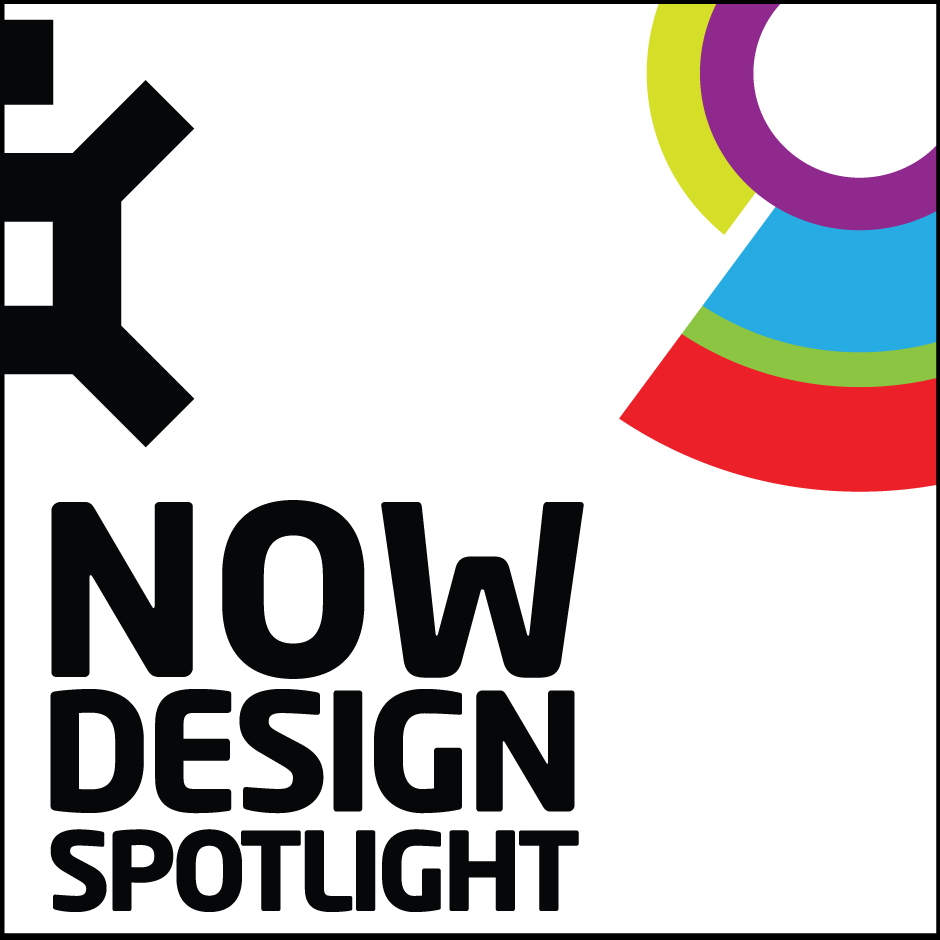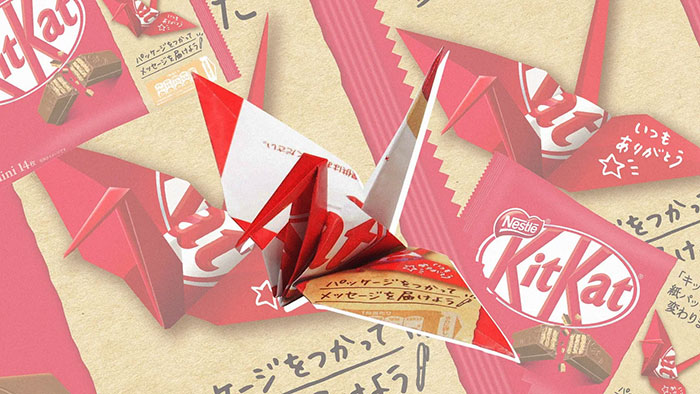
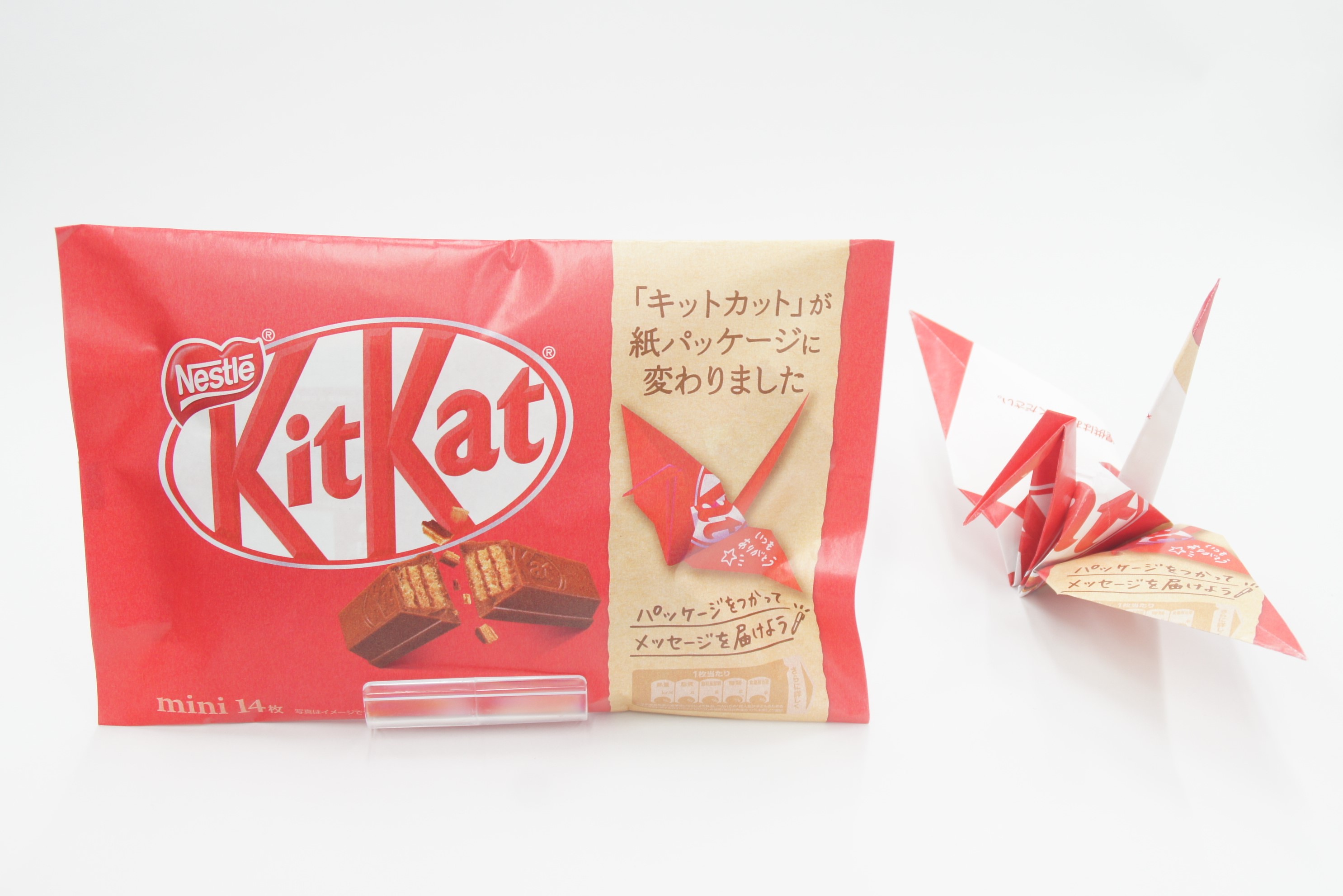
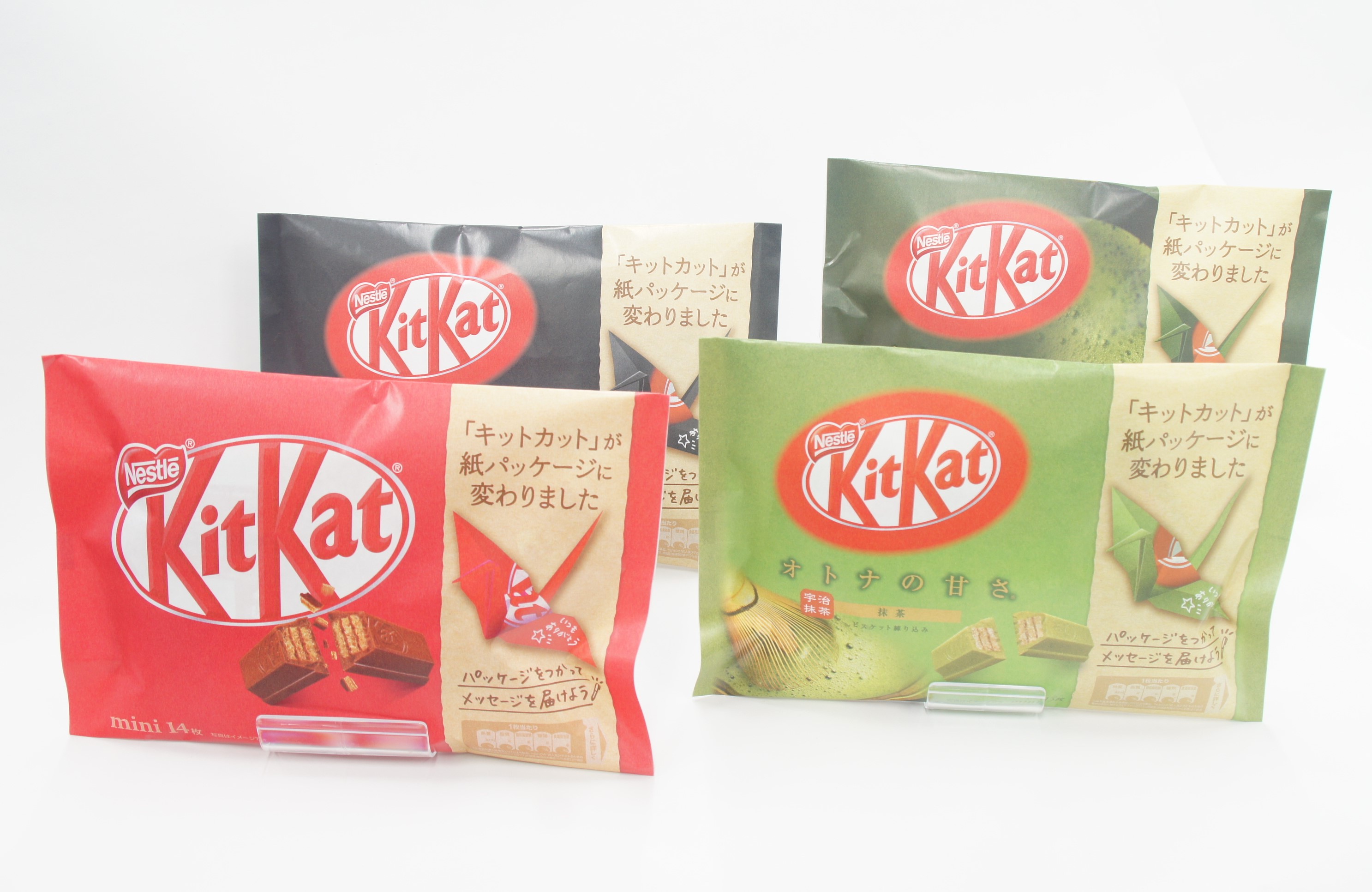
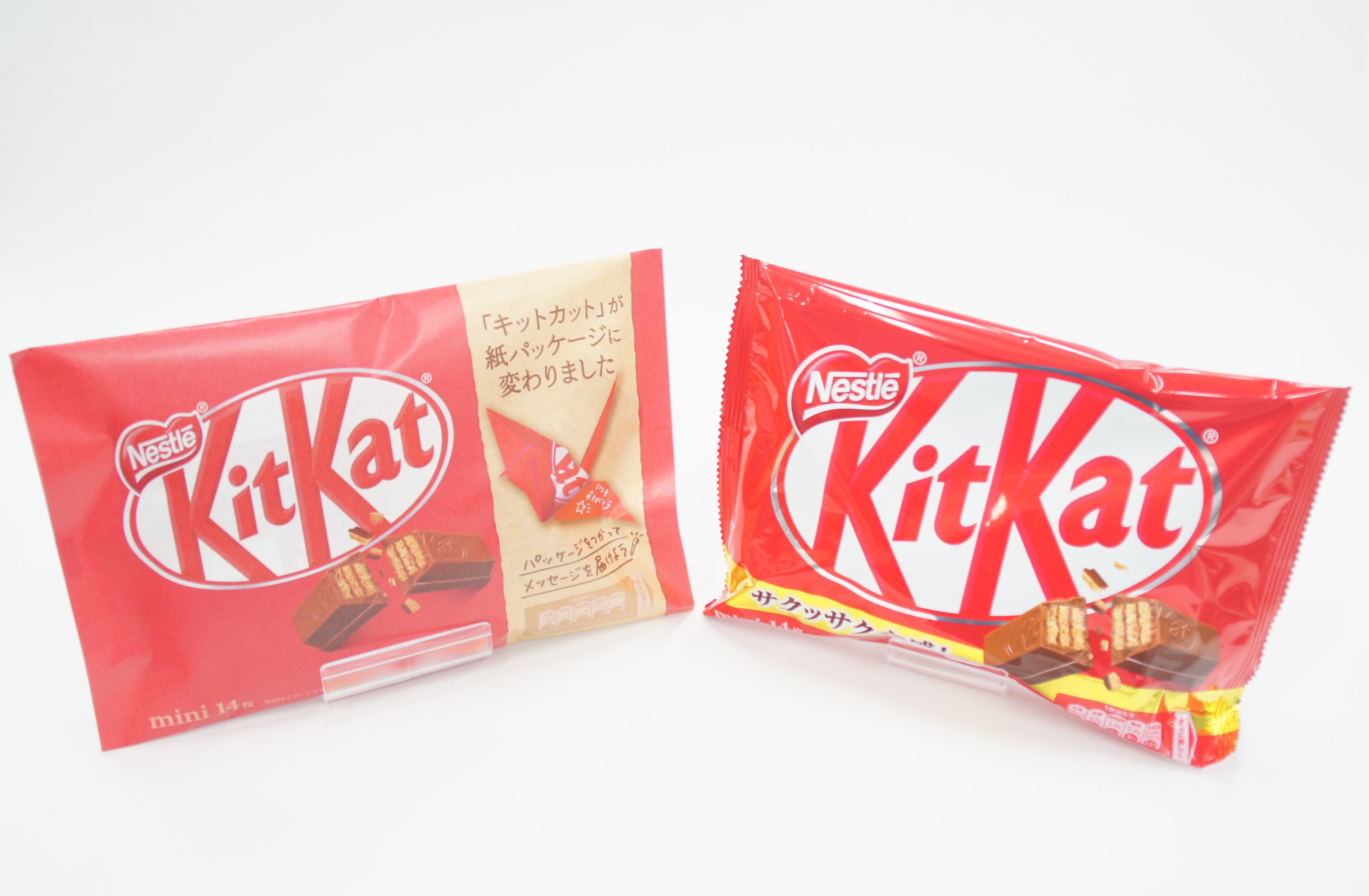
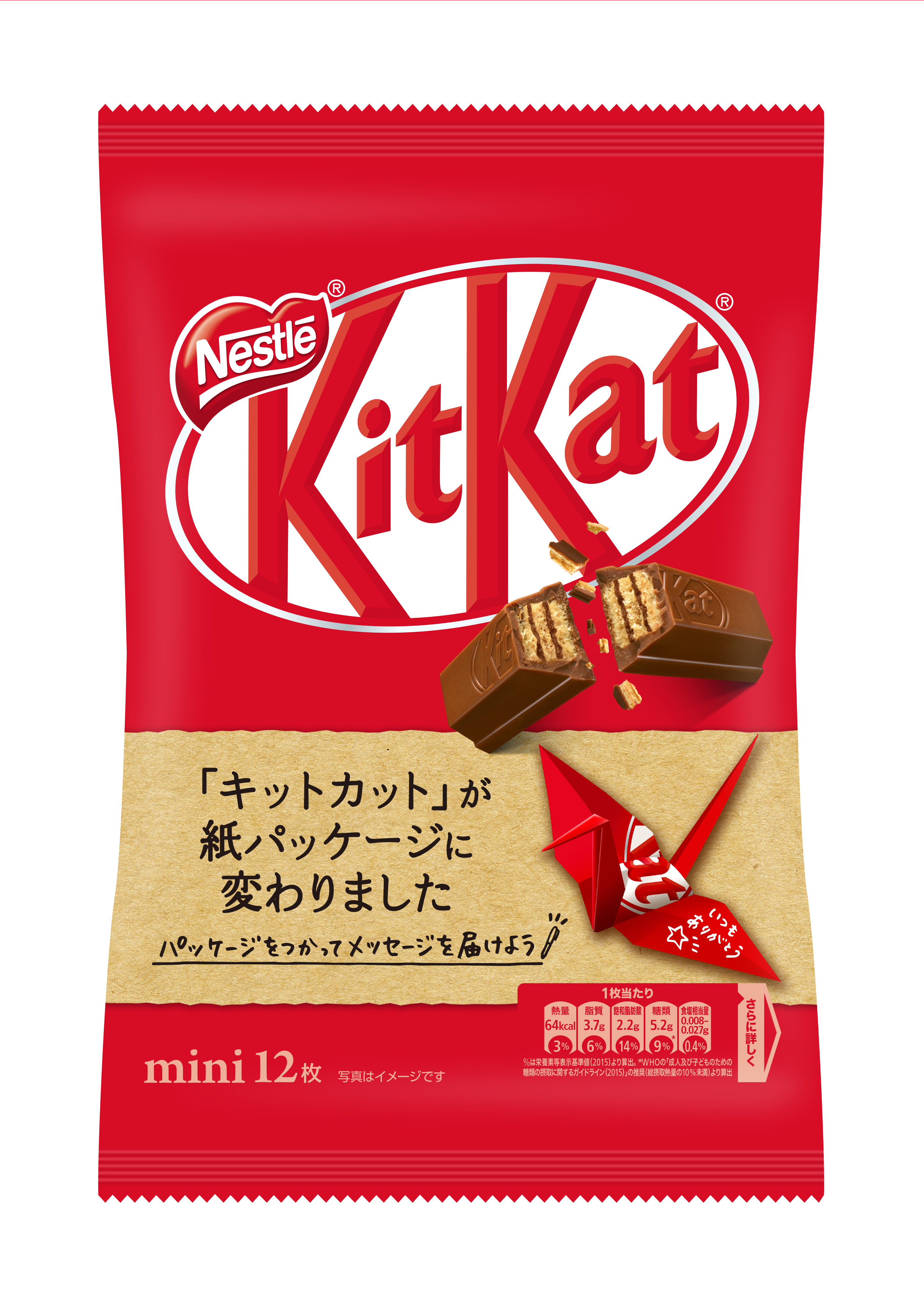
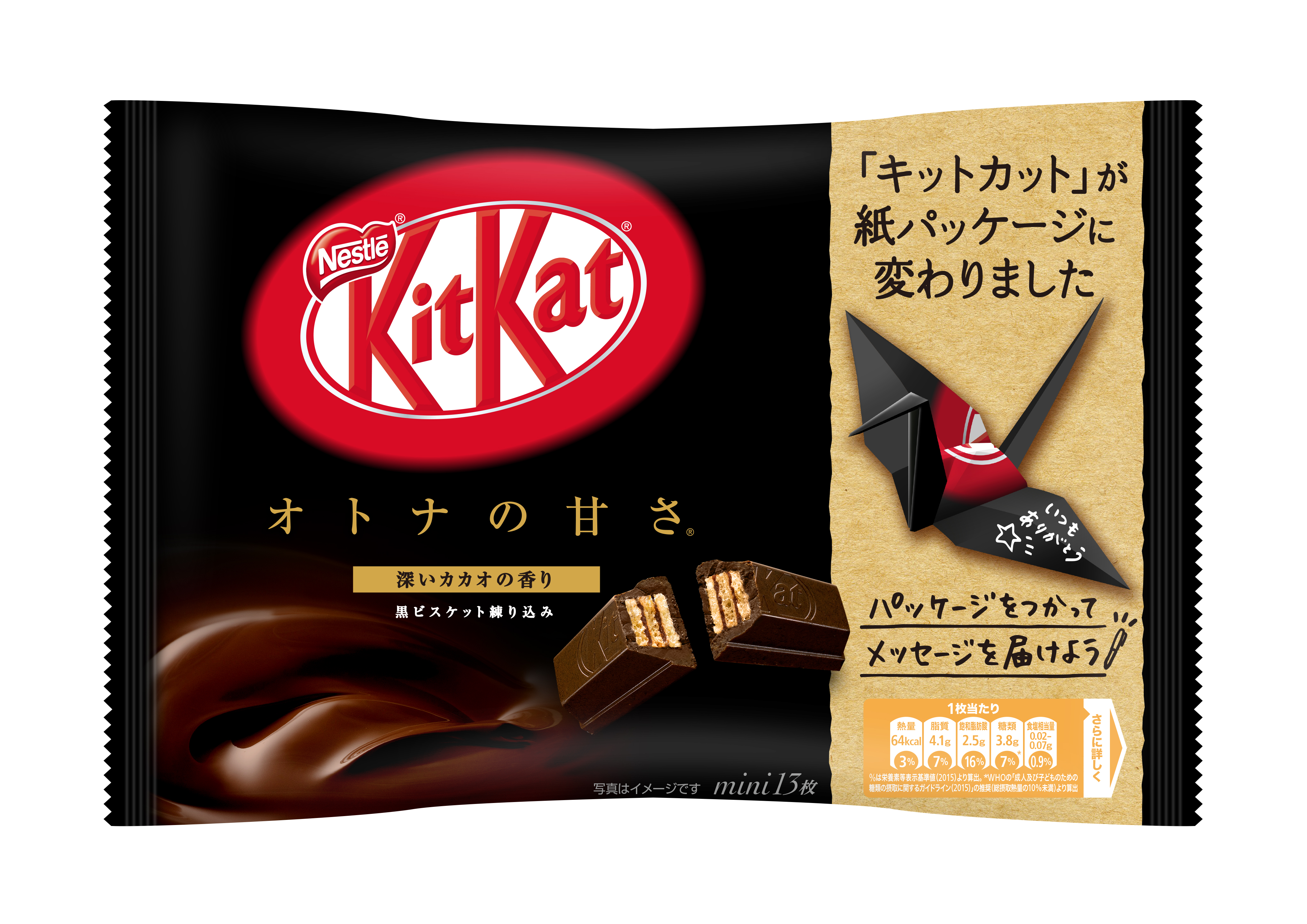
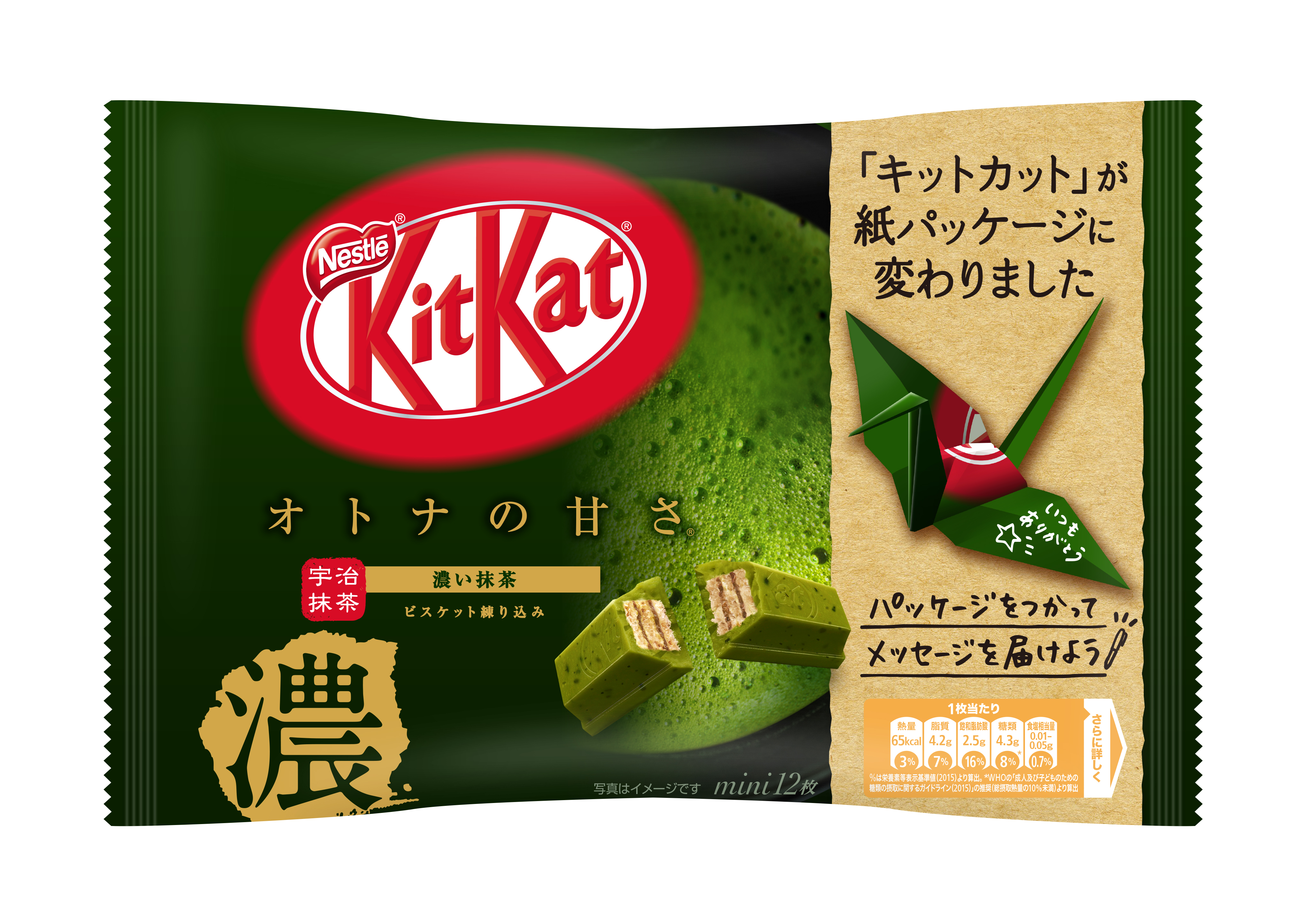
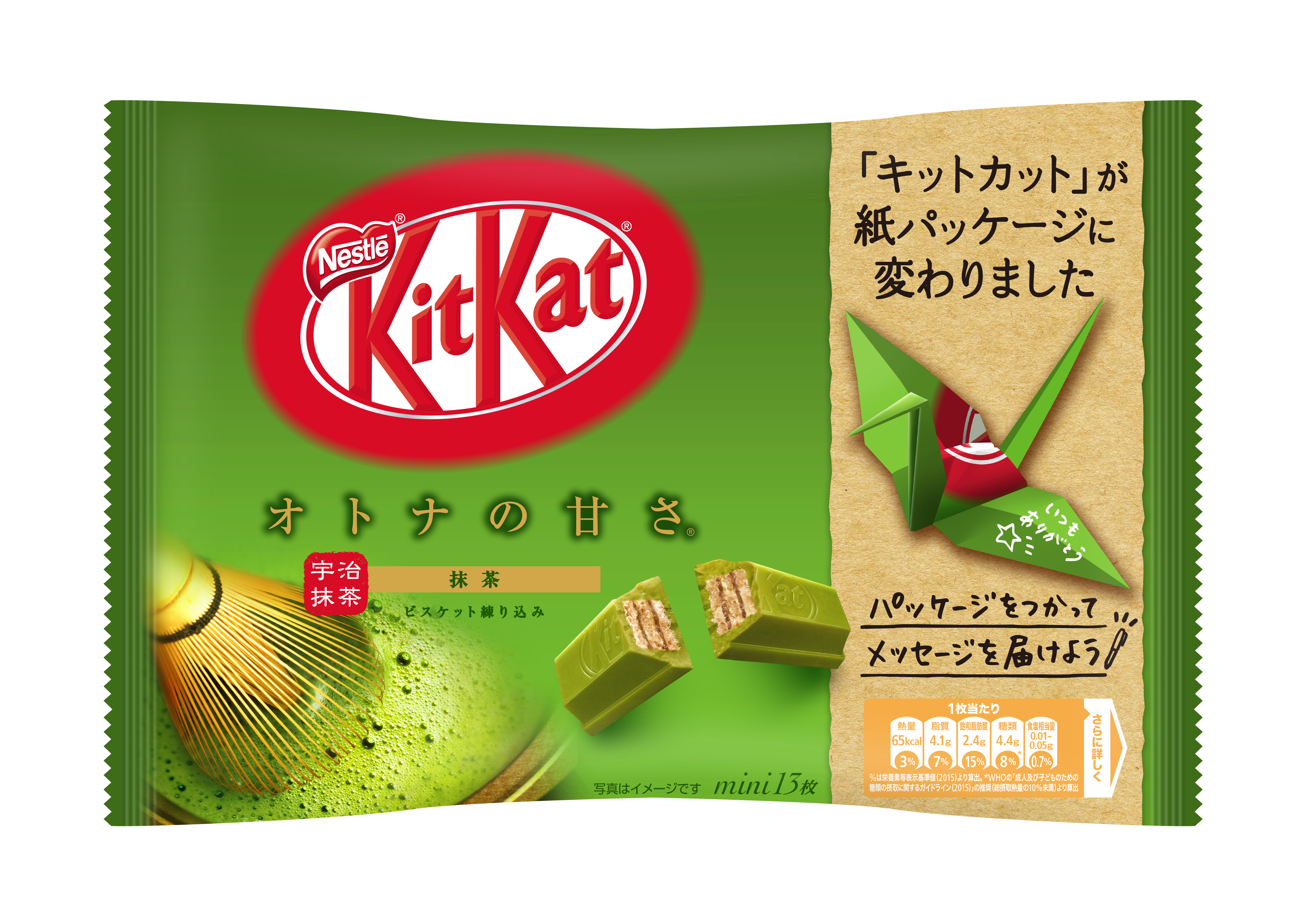
Image Credit : Nestlé
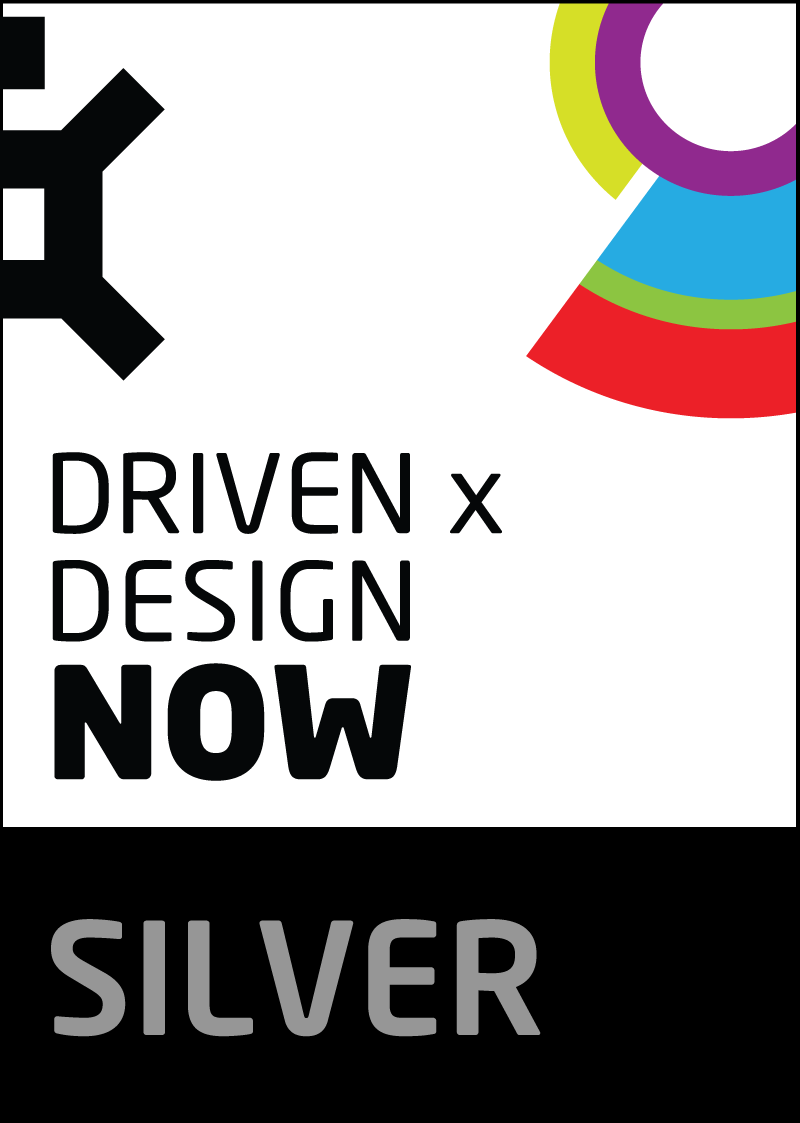
Project Overview
Accelerating Nestlé Japan's efforts to resolve plastic waste: In late September 2019, Kit Kat Japan switched all 5 main plastic packaging types to paper packaging that can be used to make origami.
Organisation
Project Context
Nestlé, the world's largest food and beverage company, with operations in 190 countries around the world, is beginning the shift to paper product packaging materials. This decision comes as part of a company-wide commitment to be 100% recyclable or reusable by the year 2025.
Project Innovation
As a concrete action after the announcement of the commitment, the Japanese market, which sells the most "Kitkat" in the world, will be the first to sell paper-packaged products at a commercial scale.
Japanese KitKats have changed the outer bag of the five large bag type products, from the current plastic to a paper package. With this change, Nestlé Japan expects to reduce plastics by about 380 tons per year.
With the change to paper packaging comes a unique opportunity - the once discarded packaging is now intended to be used as origami, which consumers can write thoughts and wishes on. Nestlé hopes to start a new communication method unique to the KitKat brand that conveys thoughts to important people by creating symbolic paper cranes.
In response to the plastic waste problem, Nestleé seeks to expand their paper packaging to other brands and products. The goal is based on the “Creating Shared Value” principle of Nestlé's business strategy.
Commercial - Object
Commercial projects recognises that design is the means to create meaningful experiences for users, create value for people and drive profit for businesses.
The object category celebrates creative and innovative design for an object or product. Consideration is given according to the design context and need, design innovation and the application of human centred design principles.
More Details

